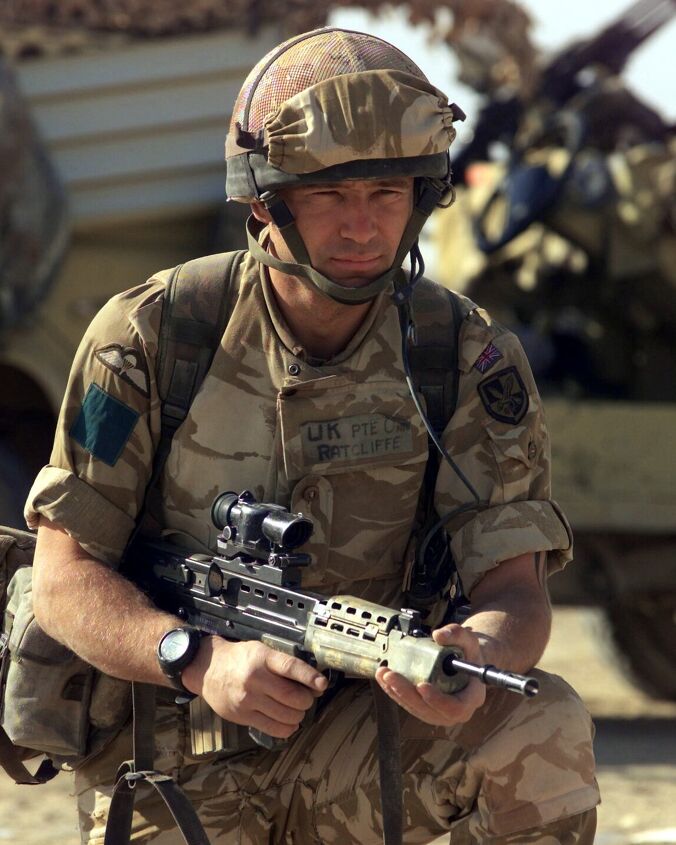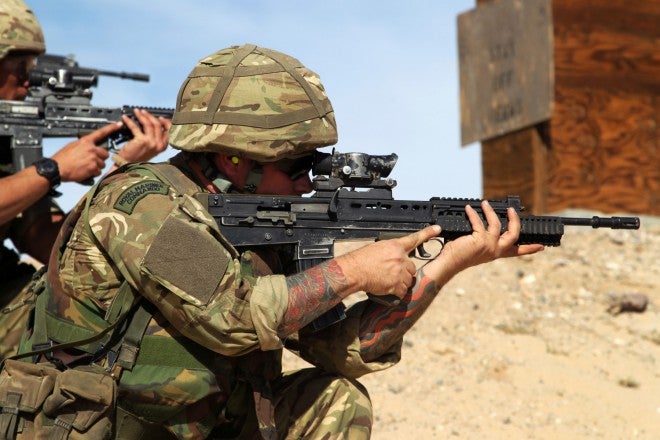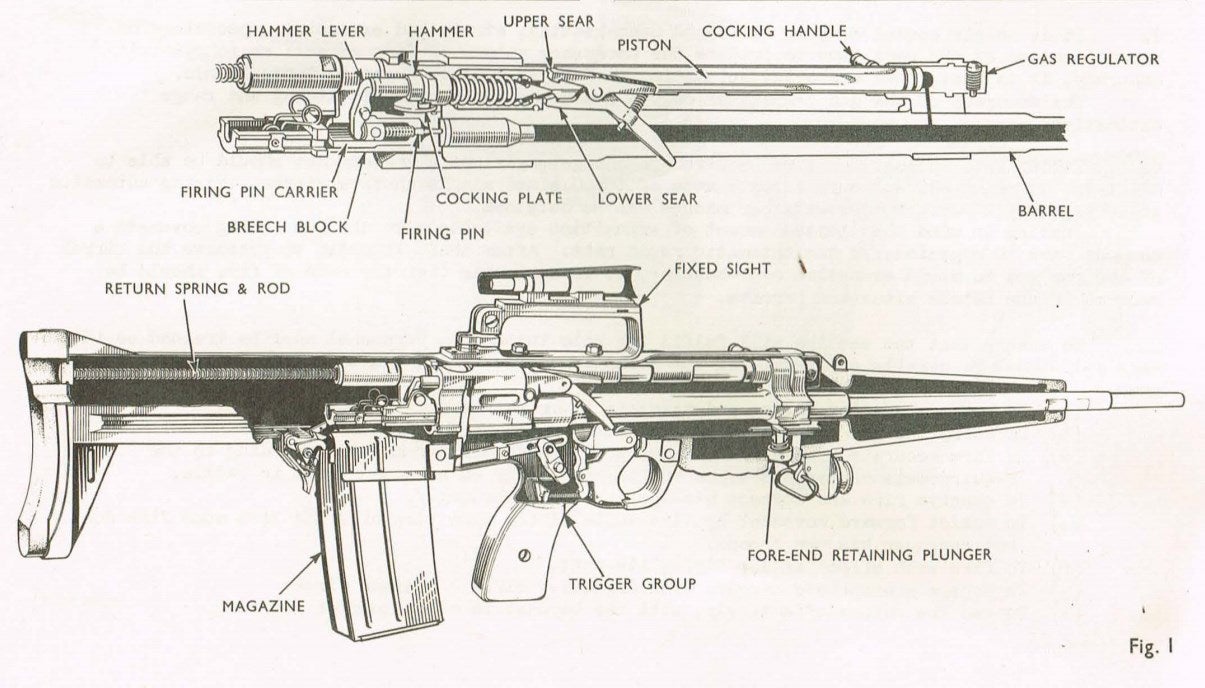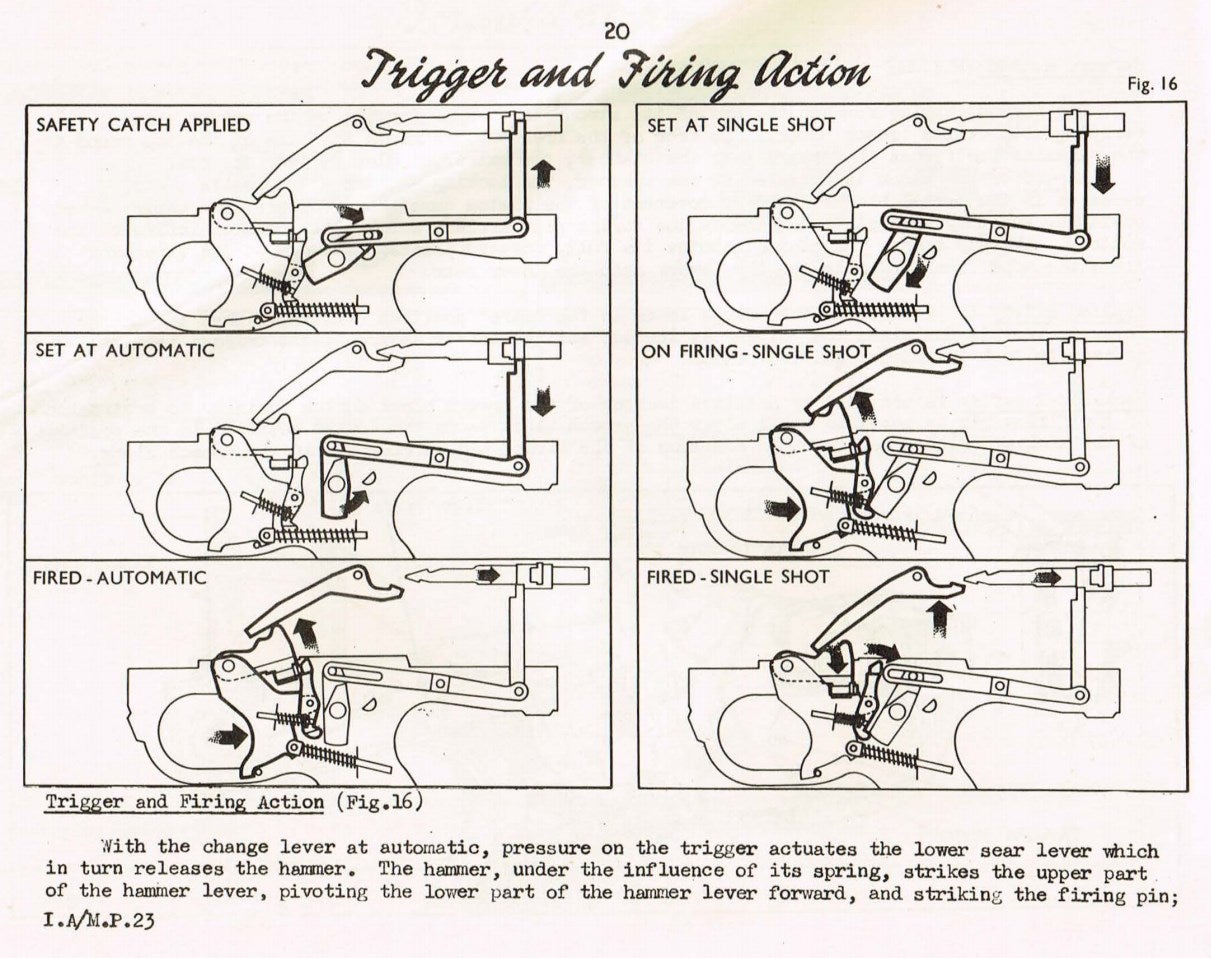The concept of a stockless – or “bullpup” – rifle has been around since the very dawn of the 20th Century. It was invented in the United Kingdom, the country with which it still is most closely associated. After World War II, the concept began to gain traction, but bullpups saw their greatest success in the 1970s and ’80s, being adopted by Austria, Britain, France, Singapore, and many other major nations of the world. However, in the modern military market, the concept’s popularity has declined. The questions of why, and how designers can create more competitive military bullpups are the subjects of this article.
I. Bullpups are Losing Ground
It is an obvious advantage: Delete the stock, move the pistol grip forward, and voila, an extra 4-8″ of barrel absolutely free. But, if it’s so easy to see the appeal of the bullpup, why has the concept lost ground in global military market? Just a few decades ago, during the heyday of the bullpup, one could be forgiven for thinking it was just a matter of time before the “stockless” rifle became the de-facto standard configuration of modern infantry rifles. Yet, that hasn’t happened, and in fact fewer and fewer companies are offering military rifles of that type. This is closely related to the fact that several nations that have used bullpups for decades have already dropped (e.g., New Zealand), or are poised to drop (e.g., France) bullpup rifles in favor of conventional-layout ones. The bullpup isn’t yet dead on the military market, but very few new military bullpup rifles exist, and most of those are designs that are at least 15 years old. Why?
II. Death of a Thousand Cuts
In addition to its singular, obvious benefit, the bullpup layout also presents many challenges to its designer. These include the rifle’s characteristics with regards to ejection, ambidexterity, trigger pull, control placement, forearm design, and many others not mentioned. Most – if not all – of these difficulties arise because the placement of the shooters’s hands is so far from the mechanism; in contrast, the conventional layout places the mechanism squarely between the hands. Therefore, where designing the safety and/or selector for a conventional rifle is as simple as adding a switch directly to the mechanism and making it long enough for the shooter to reach, for a bullpup another solution must be found. In this example, a designer can take one of three (or possibly more) approaches: They can just add a switch directly to the mechanism without worrying about its convenience, they can add a linkage to the switch running back to the rifle’s mechanism (which adds cost, weight, complexity, and likely fragility to the rifle), or they can take another approach suggested later in this article. The thrust of this is that the design process of a bullpup rifle is riddled with these small hurdles, making them extremely difficult weapons to engineer elegantly. It’s not impossible to do so, just much, much harder than for conventional designs.
In the 1960s and 1970s, with the memory of World War II fresh, and the threat of World War III looming large in the minds of the world’s engineers, the challenges of the bullpup seemed insignificant. In a large-scale war, draftees or conscripts would need a simple, if inelegant weapon that could be produced cheaply and that provided good effectiveness. What human factors considerations that existed then were the legacy of the gravelbelly 10-ring-shooter’s tradition, not hard-learned lessons taught by terrorists, timers, and AR500 steel. During the Cold War, the threat of nuclear weapons led to the rise of the Armored Personnel Carrier, and later Infantry Fighting Vehicle, machines that packed troops tightly within their armored hulls, protecting them against nuclear, biological, and chemical attacks. The needs of the armies during this period were thus ideal for the bullpup; designers were free to take the simplest route regardless of ergonomic considerations, so long as the product was cheap and small enough for the large-scale mechanized warfare expected at the time. The FAMAS, AUG, and L85 are all typical products of this martial environment.

The much-troubled L85 is perhaps the most instructive Cold War-era bullpup rifle. Little more than an AR-18 with a repositioned pistol grip and no stock, the L85’s ergonomic limitations have become painfully obvious in the three decades since its introduction. Image source: wikimedia.org
Decades later, after lessons from Desert Storm, Chechnya, Afghanistan, Iraq, and the booming civilian competition and training circuit, the need for an infantry rifle has changed in subtle ways that are having a profound impact on the bullpup rifle. Brutal city fighting against fanatical insurgents drove home the need for a rifle that can shoot off both sides of a barrier equally well, in contrast to the British Army’s decision just a couple decades prior to train all Her Majesty’s troops to shoot from the right shoulder only. The threat of vehicle-borne IEDs has raised the thumb-reached safety from a mere convenience to a necessity, and every new rifle is compared ruthlessly with both shot timer and scale against the excellent and now-ubiquitous AR-15. Today, every human factors element undergoes intense scrutiny, and in this harsh light the bullpups of previous generations seem dated and clunky. In the balance against a myriad of small but awkward flaws, the singular advantage of an additional 5-10% muzzle velocity seems virtually academic.
III. The Bullpup Lives On… Just Barely
Even so, the bullpup will probably never go away completely, as there are still some roles to which it’s very well-suited. The rifle-caliber personal defense weapon, for example, is a clear application for the bullpup, as ergonomics are not nearly as important for an echelon weapon, and compactness is at a premium. On the civilian side, the bullpup is a highly convenient workaround for the US National Firearms Act’s provisions on Short-Barreled Rifles, allowing American civilian shooters to own much shorter, handier weapons than they otherwise could without wading through the onerous regulations of the Act. How, though, can the bullpup military rifle make a comeback?
IV. Finding a Cure
The challenges that face bullpup designers aren’t insoluble, but the best solutions to them require flexible thinking and and creativity. Simply taking an existing conventional design and rearranging it to create a bullpup (a la the L85) doesn’t produce a very competitive weapon, but there are also significant drawbacks to rearranging controls via linkages and extensions, usually expressed by additional weight and cost of the system versus conventional weapons.
A more fundamental approach to the concept is needed for the bullpup to remain competitive. For one example of outside-the-box bullpup design, we will take a look at one of the earliest of the breed: The little-known British EM-1 Thorpe rifle from the late 1940s and early 1950s (not to be confused with the EM-1 Korsac, a different weapon). The trigger of the Thorpe is unique; in contrast to traditional trigger designs that use a hammer assembly located behind the rifle’s mechanism, the Thorpe uses an innovative telescoped striker arrangement:
This system is a radical departure from traditional rifle trigger design. The striker is connected via a see-saw linkage to a spring-loaded driver located alongside the offset gas piston. This driver ends in a point with two sear surfaces that reach forward to over and just behind the pistol grip. The trigger connects to an alligator-clip-like sear, and the whole assembly provides all desired modes of fire. This arrangement means that the trigger’s controls may all be naturally located around the pistol grip, without needing complex extensions or connecting bars to do so. Further, the entire rear of the rifle’s receiver is left clear of fire control components, which reduces the weight of the rear receiver and opens up additional options for novel ejection patterns (such as downward) that would create design problems with conventional fire control groups.
The Thorpe’s trigger arrangement is too complicated to be ideal for a service rifle, but it points the way forward for the design philosophy needed for next generation bullpups. The fundamental mechanisms can and should be re-imagined by talented designers to help elegantly and economically surmount these barriers to becoming fully competitive with conventional designs. However, the additional effort required to create and execute solutions like this one is still an obstacle to realizing the “solved” bullpup rifle. A company marketing a new design of any kind will have to offset its development costs somehow, whereas one doing the same for an established design like the AR-15 does not have that problem. This means, generally speaking, any new rifle (bullpup or conventional) will be more expensive roughly in proportion to how ambitious it is.
Those are not encouraging words for the would-be designer of the “solved” bullpup, but there is yet hope. New lightweight ammunition designs on the horizon may soon revolutionize small arms, and it’s likely that whatever NATO’s next major caliber is, it will not be compatible with existing designs. This means all firms that want to remain competitive will be back at square one; everyone will have to create a new design that works with the latest ammunition, or die trying. The stage may soon be set for the ideal bullpup to finally turn the tables.
 Your Privacy Choices
Your Privacy Choices


